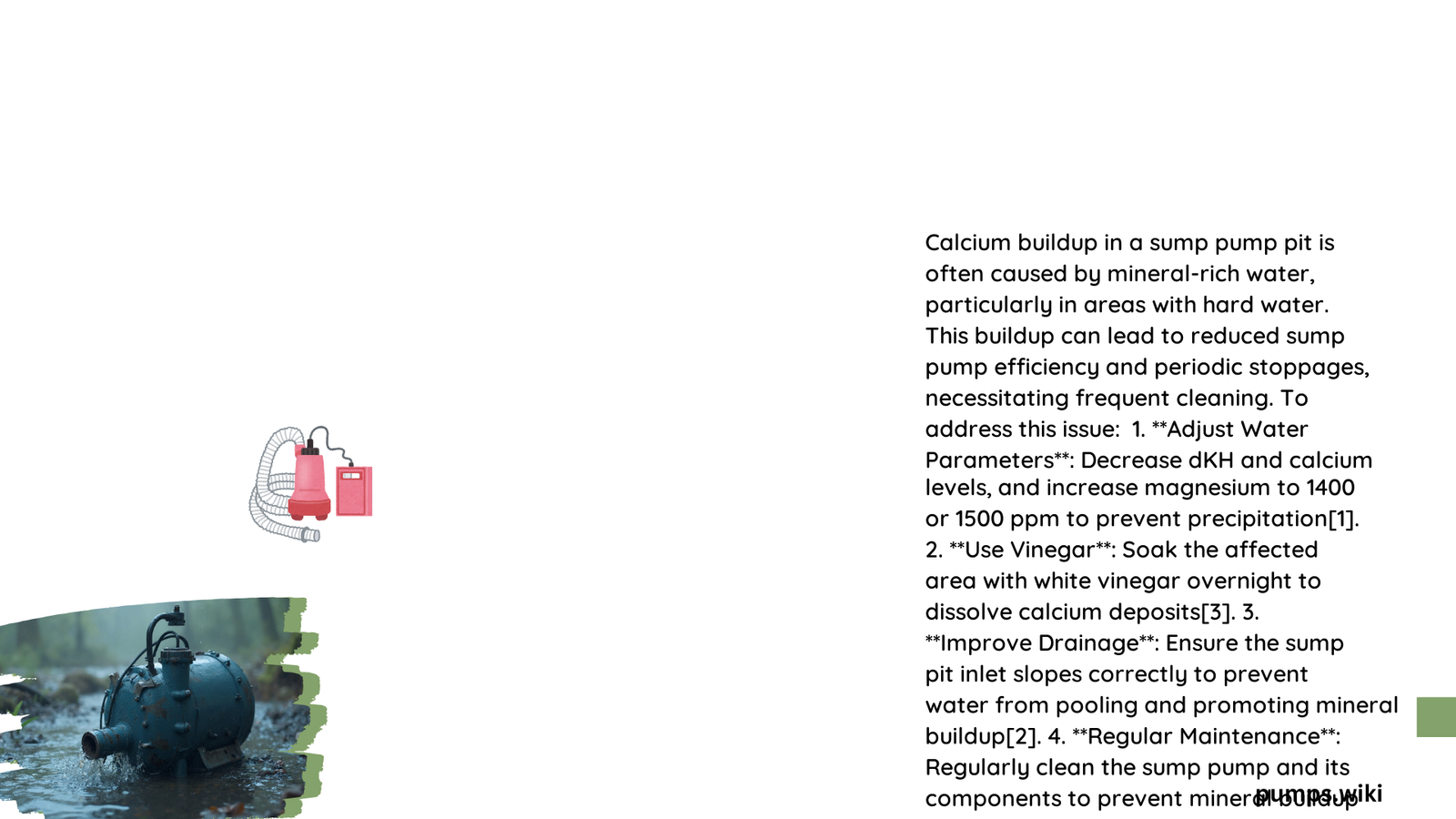Calcium buildup in sump pump pits can significantly compromise drainage efficiency, causing reduced water flow, increased pump strain, and potential system failure. Mineral-rich hard water creates stubborn deposits that accumulate over time, transforming a critical home protection mechanism into a potential maintenance nightmare. Understanding the root causes and implementing strategic prevention methods is crucial for homeowners seeking to maintain optimal sump pump performance.
What Causes Calcium Buildup in Sump Pump Pit?
How Does Water Hardness Impact Mineral Deposits?
Water hardness plays a pivotal role in calcium accumulation. Minerals like calcium and magnesium create persistent deposits when water consistently flows through the sump pump system. Consider these key factors:
| Water Hardness Level | Mineral Concentration | Buildup Risk |
|---|---|---|
| Soft Water (0-3 gpg) | Low | Minimal |
| Moderate Water (3-7 gpg) | Medium | Moderate |
| Hard Water (7-10 gpg) | High | Significant |
| Very Hard Water (10+ gpg) | Very High | Extreme |
What Environmental Conditions Accelerate Calcium Deposits?
Several environmental factors contribute to calcium buildup:
- Frequent Pump Operation: Continuous water movement increases mineral deposit potential
- High pH Levels: Alkaline water promotes faster calcium crystallization
- Stagnant Water: Extended periods of water sitting in the pit accelerate mineral accumulation
- Temperature Fluctuations: Rapid temperature changes can expedite mineral precipitation
How to Detect Early Signs of Calcium Buildup?

Homeowners should watch for these warning indicators:
- Reduced pump efficiency
- Unusual grinding or scraping sounds
- Visible white or chalky residue
- Slower water drainage
- Increased energy consumption by the pump
What Are Effective Removal Techniques?
Chemical Dissolution Methods
Vinegar Treatment
- Turn off and disconnect the sump pump
- Drain the pit completely
- Create a 50/50 vinegar-water solution
- Soak for 24-48 hours
- Scrub and rinse thoroughly
Commercial Descaling Solutions
- Use specialized calcium removal products
- Follow manufacturer’s instructions precisely
- Wear protective gear
- Rinse completely after treatment
Mechanical Removal Strategies
- Use soft-bristled brushes
- Employ plastic scrapers
- Avoid metal tools that might damage pump surfaces
- Consider professional cleaning for severe cases
How to Prevent Future Calcium Accumulation?
Proactive maintenance strategies include:
- Install water softening systems
- Conduct bi-annual pit inspections
- Monitor water hardness levels
- Use protective coatings
- Implement regular cleaning schedules
What Are the Long-Term Consequences of Neglect?
Ignoring calcium buildup can lead to:
– 50% reduction in pump efficiency
– Premature system failure
– Potential basement flooding
– Increased energy consumption
– Costly replacement expenses
Professional Recommendations
- Annual professional inspection
- Water quality testing
- Invest in preventative maintenance
- Consider advanced filtration systems
Pro Tip: Document your maintenance activities and water test results to track system performance over time.
Cost-Benefit Analysis
| Maintenance Action | Estimated Cost | Potential Savings |
|---|---|---|
| Annual Cleaning | $100-$250 | $500-$2000 |
| Water Softener Installation | $500-$1500 | $1000-$3000 |
| Professional Inspection | $150-$300 | $1500-$5000 |
Technical Insights
Calcium carbonate (CaCO3) forms through complex chemical interactions between dissolved minerals and environmental conditions. Understanding these processes helps develop more effective prevention strategies.
References:
– Water Hardness Research
– Sump Pump Maintenance Guidelines
– Mineral Deposit Prevention Techniques
